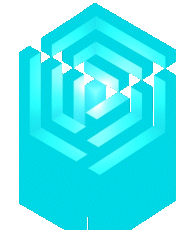
Home Orange Blue Green Pink
Work related interests & ressources
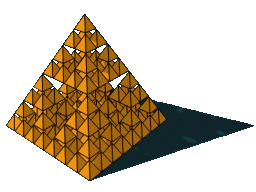 |
I have worked for a year on a project at the IBOIS-EPFL laboratory, which aimed to use IFS geometries in wooden structures. IFS or Iterated function systems include L-Systems, fractals and subdivision curves and surfaces. What is exactly an IFS ? What is an IFS attractor ? How do I approximate an attractor ? What does a simple attractor look like ? For answers to these questions, check out :  A brief introduction to IFS.
A brief introduction to IFS.What's a subdivision scheme ? How are they related to IFS ? For answers to these questions, check out :  IFS and subdivision schemes.
IFS and subdivision schemes.What's a dissection subdivision ? How are they related to IFS ? For answers to these questions, check out :  IFS and dissection.
IFS and dissection.What kind of project can you work on that mixes architecture, wood and IFS ? For the begining of an answer to this question, check out :  A website dedicated to the particular project I worked on.
A website dedicated to the particular project I worked on. My MultiResMeshEditor program.
My MultiResMeshEditor program. My SubdivSchemeEditor program.
My SubdivSchemeEditor program.Screw this, I just want to see pretty pictures ? Check out :  An image gallery of objects related to this project.
An image gallery of objects related to this project. |
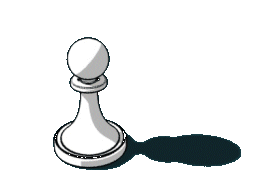 |
I was introduced to AI problems when I worked for a 2 months internship at the french Laboratory for Architecture and Analysis of Systems
(LAAS) in the Organisation and Driving of Discrete Systems group, under the supervision of M. Lopez and Ms Huguet
and in collaboration with Mehmet Celikbas (See Orange page for contacts and succint information). The goal of this internship was to program a set of functions and algorithms used to treat discrete constraint satisfaction problems. The following year I worked 3 months in the Cork Constraint Computation center (4C Cork). What is AI? What are CSP ? How do the two relate ? For brief answers to these questions check out :  A brief introduction to the concepts involved in AI and constraint programing.
A brief introduction to the concepts involved in AI and constraint programing.For more detailed information on a particular aspect of CSP, check out :  A brief report on the nature of my work in the 4C lab which briefly approaches the notions of search policies and heuristics..
A brief report on the nature of my work in the 4C lab which briefly approaches the notions of search policies and heuristics..Unfortunately the code I worked on in Cork is part of a wider project and is not mine to spread on the web, however, if you love reading the source code from old student's projects, here are  The specs of a code written in ADA implementing consistency algorithms (AC,PC) and problem solving algorithms (Forward checking, backtrack...).
The specs of a code written in ADA implementing consistency algorithms (AC,PC) and problem solving algorithms (Forward checking, backtrack...). The code corresponding to these specs.
The code corresponding to these specs.Screw this I want to play ? Check out :  A java applet which can teach you to solve a mastermind as efficiently as you possibly can, using Constraint propagation techniques.
You may notice the graphical interface is ripped off one of the best computer games ever (namely : Fallout). Please don't sue me.
A java applet which can teach you to solve a mastermind as efficiently as you possibly can, using Constraint propagation techniques.
You may notice the graphical interface is ripped off one of the best computer games ever (namely : Fallout). Please don't sue me. |
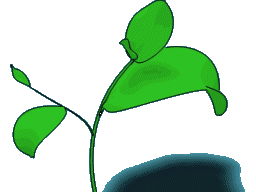 |
I did my master's degree internship in the IRIT lab, following an introductory course by
Hervé Luga on the subject of artificial life. The goal of this internship was the creation of a 3d shapes sculpting
tool using genetic programing techniques. What is Artificial life ? How and why are artificial life techniques used ? Here is:  A brief introduction (under construction) to A-life.
A brief introduction (under construction) to A-life.For a specific example of genetic programing applied to visual creation, here is :  A page presenting my work on an implicit surface sculpting tool.
A page presenting my work on an implicit surface sculpting tool.Screw this, I just want to see pretty pictures ? Check out :  An image gallery of sculptures created with this tool.
An image gallery of sculptures created with this tool.Another little application, somewhere between artificial life and artificial intelligence I programed with Erwan Plougonven is the Genetic football game. This game implements a simple artificial evolution process to train AIs to play a game. Here is :  A brief description of the implementation, and :
A brief description of the implementation, and : A demonstration of two genetically close players competing.
A demonstration of two genetically close players competing. |
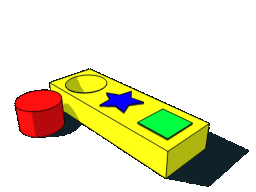 |
I worked as assistant to the chair of geometry at the EPFL school,
under the responsibility of P. Buser.
As part of this job, I've programmed a set of visualisation programs supporting a 1st year geometry class. You'll find these programs as well as installation instructions and brief descriptions :  Here.
Here. |
